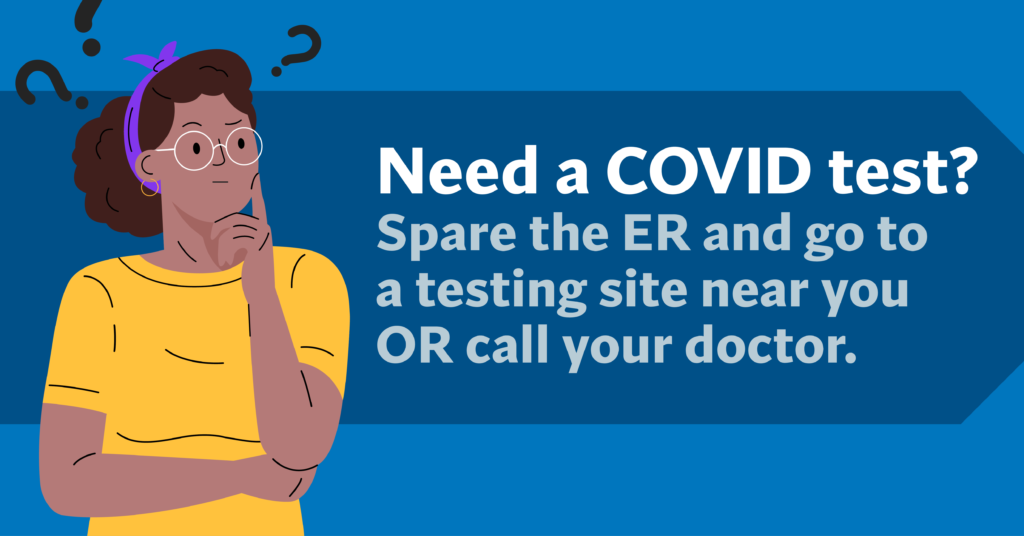BEHAVIORAL HEALTH ASSESSMENT REPORT: To inform future planning on behavioral health, the Department of Health Care Services (DHCS), in collaboration with its stakeholders, produced a report on California’s behavioral health system: Assessing the Continuum of Care for Behavioral Health Services in California: Data, Stakeholder Perspectives, and Implications. This report reviews data and stakeholder perspectives as DHCS implements major behavioral health initiatives, including the Behavioral Health Continuum Infrastructure Program; the response to new federal funding opportunities; and a proposal for a Section 1115 Medicaid demonstration waiver in 2022 to strengthen mental health services for people living with serious mental illness, and children and youth living with serious emotional disturbance.
ALL ACCESS TRANSFER CENTER: As COVID-19 cases continue to surge, the Emergency Medical Services Agency (EMSA) is offering patient transfer assistance guidance. The state has contracted with the All Access Transfer Center (AATC) to be a single point of contact for coordination of COVID-19-positive patient transfers statewide. The AATC will serve as a statewide patient distribution center in coordination with the Regional Disaster Medical Health Specialists (RDMHS), Medical Health Operational Area Coordinators (MHOAC), and health systems. This will aid all parties in maintaining statewide situational awareness and streamline efforts to identify open beds across the state when out-of-county transfers are necessary to level-load overburdened hospitals. The AATC will provide ongoing status reports to EMSA, the California Department of Public Health, and RDMHS/Regional Disaster Medical and Health Coordinators. Hospital sites should first notify the local MHOAC when they need to access resources and support from the AATC.
HUMAN TRAFFICKING: January is Human Trafficking Awareness Month, and the American Hospital Association (AHA) has released a digital toolkit for use by hospitals and health systems. The toolkit includes social media graphics, posts, and videos for teaching local communities about the dangers of human trafficking — available in English and Spanish. The health care system plays an important role in identifying and treating victims of human trafficking. Estimates show that approximately 80% of human trafficking victims are women, and health care providers are often the first professionals to have contact with trafficked women and girls. This puts health care providers in a unique position to identify victims and provide them with physical and psychological care — while in captivity and after release. More information can be found on AHA’s Combating Human Trafficking page. Closer to home, the Health Subcommittee of the San Diego Human Trafficking & CSEC Advisory Council meets monthly (first Wednesday at 6 p.m.) and provides excellent resources and training for health care providers. Upcoming continuing medical education/continuing education topics include trauma-informed care and non-fatal strangulation. Ways to connect with the council include:
- YouTube
- Webform to join the email list
- Email lwade@hasdic.org or healthsubcom@gmail.com for additional information

HARM REDUCTION GRANT PROGRAM: This Substance Abuse and Mental Health Services Administration (SAMHSA) funding is to support community-based overdose prevention programs, syringe services programs, and other harm reduction services. Funding will be used to enhance overdose and other types of prevention activities to help control the spread of infectious diseases and the consequences of such diseases. Eligible applicants are states, local, tribal, and territorial governments; nonprofit community-based organizations; and primary and behavioral health organizations. Total available funding up to $9,750,000 per year or $29,250,000 over three years; 25 awards of up to $400,000 per award per year. Deadline to apply is Feb. 7. For more information and to apply, visit the SAMHSA website.
ED AVOIDANCE GRAPHICS: To help California hospitals as they face increased patient volumes due to COVID-19 and the omicron variant surge, CHA has created graphics for use in social media. The graphics, which are available in Zip files for Facebook and Twitter, are designed to serve as a reminder that patients should save the emergency department for emergencies and seek a COVID-19 test or treatment for mild COVID-19 in more appropriate settings.

